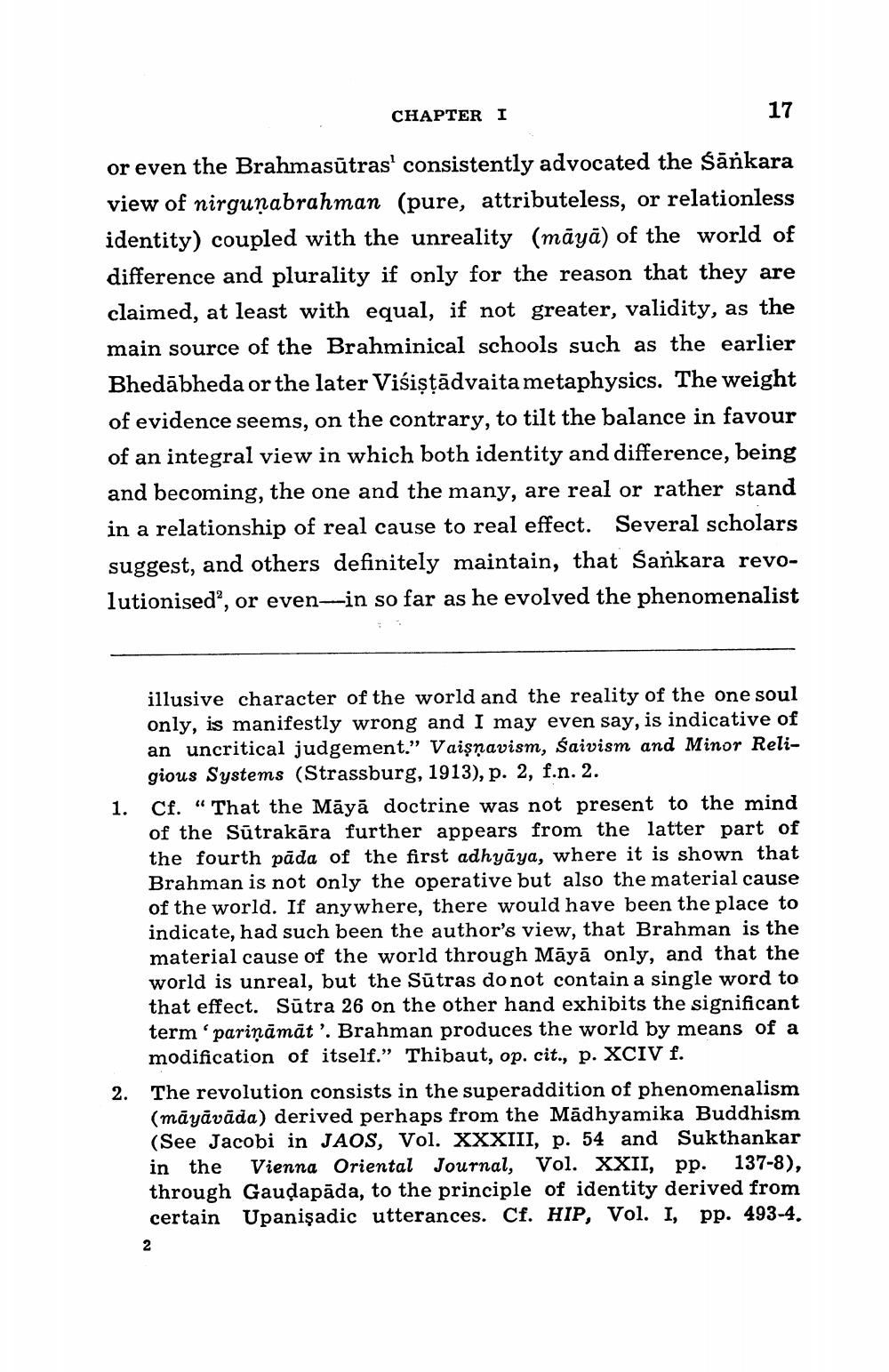________________
CHAPTER I
17
or even the Brahmasūtras' consistently advocated the śānkara view of nirgunabrahman (pure, attributeless, or relationless identity) coupled with the unreality (māyā) of the world of difference and plurality if only for the reason that they are claimed, at least with equal, if not greater, validity, as the main source of the Brahminical schools such as the earlier Bhedābheda or the later Visiştādvaita metaphysics. The weight of evidence seems, on the contrary, to tilt the balance in favour of an integral view in which both identity and difference, being and becoming, the one and the many, are real or rather stand in a relationship of real cause to real effect. Several scholars suggest, and others definitely maintain, that Sankara revolutionised, or even-in so far as he evolved the phenomenalist
illusive character of the world and the reality of the one soul only, is manifestly wrong and I may even say, is indicative of an uncritical judgement.” Vaişņavism, śaivism and Minor Religious Systems (Strassburg, 1913), p. 2, f.n. 2. Cf." That the Māyā doctrine was not present to the mind of the Sūtrakāra further appears from the latter part of the fourth pada of the first adhyāya, where it is shown that Brahman is not only the operative but also the material cause of the world. If anywhere, there would have been the place to indicate, had such been the author's view, that Brahman is the material cause of the world through Māyā only, and that the world is unreal, but the Sūtras do not contain a single word to that effect. Sūtra 26 on the other hand exhibits the significant term 'pariņāmāt'. Brahman produces the world by means of a modification of itself.” Thibaut, op. cit., p. XCIV f. The revolution consists in the superaddition of phenomenalism (māyāvāda) derived perhaps from the Madhyamika Buddhism (See Jacobi in JAOS, Vol. XXXIII, p. 54 and Sukthankar in the Vienna Oriental Journal, Vol. XXII, pp. 137-8), through Gaudapāda, to the principle of identity derived from certain Upanişadic utterances. Cf. HIP, Vol. I, pp. 493-4.
2.




